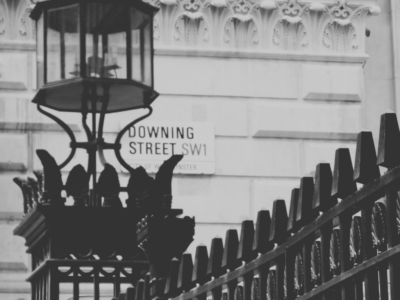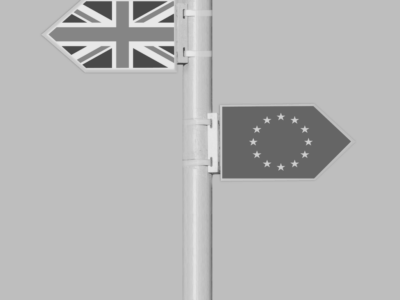UK house prices rose by 0.2% in November, after taking account of seasonal effects.
This was the third successive monthly increase and resulted in an improvement in the annual rate of house price growth from -3.3% in October, to -2.0%.
While this remains weak, it is the strongest outturn for nine months.
There has been a significant change in market expectations for the future path of Bank Rate in recent months which, if sustained, could provide much needed support for housing market activity, comments Robert Gardner, Nationwide’s Chief Economist.
Gardner continued, in mid-August, investors had expected the Bank of England to raise rates to a peak of around 6% and lower them only modestly (to c.4%) over the next five years.
By the end of November, this had shifted to a view that rates have now peaked (at 5.25%) and that they will be lowered to around 3.5% in the years ahead.
These shifts are important as they have led to a decline in the longer-term interest rates (swap rates) that underpin fixed rate mortgage pricing.
If sustained, this will help to ease the affordability pressures that have been stifling housing market activity in recent quarters, where the number of mortgage approvals for house purchases has been running at c.30% below pre-pandemic levels.
While mortgage rates are unlikely to return to the lows prevailing in the aftermath of the pandemic, modestly lower borrowing costs, together with solid rates of income growth and weak/negative house price growth, should help underpin a modest rise in activity in the quarters ahead.
Nevertheless, a rapid rebound still appears unlikely.
Cost-of-living pressures are easing, with the rate of inflation now running below the rate of average wage growth, but consumer confidence remains weak, and surveyors continue to report subdued levels of new buyer enquiries.
Moreover, while markets are projecting that the next Bank Rate move will be down, there are still upward risks to interest rates.
Inflation is declining, but measures of domestic price pressures remain far too high.
Policymakers have cautioned that it is too early to be talking about interest rate cuts.
Indeed, three of the nine members of the Bank of England’s Monetary Policy Committee voted to increase Bank Rate at its meeting in early November, though the remaining six preferred to hold at 5.25% for the time being, Gardner concluded.
| Headlines | Nov-23 | Oct-23 |
|---|---|---|
| Monthly Index* | 518.0 | 516.8 |
| Monthly Change* | 0.2% | 0.9% |
| Annual Change | -2.0% | -3.3% |
| Average Price(not seasonally adjusted) | £258,557 | £259,423 |
Foxtons CEO, Guy Gittins, comments:
“More property market positivity today, with house prices recording a second consecutive monthly increase.
Although the market is yet to return to full health when viewing house price performance on an annual basis, it appears as though a freeze in interest rates is helping to boost homebuyer sentiment and bring a greater degree of stability and this puts us in very good stead looking ahead to the new year”
CEO of Yopa, Verona Frankish, comments:
“A second consecutive monthly increase in the rate of house price growth provides further evidence that the UK property market will finish the year on the front foot
The latest Bank of England data also shows that mortgage approvals have started to climb following a second decision to hold the base rate at 5.25%.
It’s clear that this greater degree of stability is already boosting market sentiment and allowing buyers to act with more confidence.
The fact that they are also choosing to do so this side of the Christmas break is positive and suggests that we should see a far more settled landscape come the new year.”
Director of Benham and Reeves, Marc von Grundherr, comments:
“It’s been a strange and uncertain year for the UK property market and so it’s only fitting that house prices should start to rally at a time of year when we usually see a seasonal lull.
Home sellers will rejoice at the strongest house price performance in nine months and, with mortgage market activity also starting to increase, the current outlook is very positive indeed.
However, those who have so widely prophesied the demise of the market over the last year will no doubt turn green with Grinch like fury having been proven wrong once again.”
CEO of Octane Capital, Jonathan Samuels, comments:
“Higher mortgage rates have been the key factor impacting property market performance of late.
However, the decision to hold the base rate at 5.25% has helped stabilise the market and swap rates have been reducing consistently as a result.
With buyers now confident that their mortgage terms are only likely to change for the better, we’ve seen an almost immediate increase in the number entering the market in the form of a mortgage approval uplift,
This is also starting to help push house prices in the right direction and while the current rate of growth may seem insignificant, it’s only a matter of time before this market momentum starts to snowball.”
Tomer Aboody, director of property lender MT Finance, comments:
“With November’s price rise suggesting more confidence in the market, have we seen the topping out of interest rates with potentially some reductions to come in 2024?
Some government stimulus will be needed to get things moving and help the market recover.
We need more stock to come to market in order to keep prices in check and for transaction numbers to improve, which can come via a form of stamp duty restructure.”
Anna Clare Harper, CEO of sustainable investment adviser GreenResi, comments:
“Higher base rates are designed to cool demand and therefore pricing in the economy.
This cooling of house prices, at least in nominal terms, suggests it is working to plan.
House prices are also still coming down from a bubble caused by Covid and Stamp Duty reductions, which created double-digit house price growth for much of the last three years.
The truth is that the housing market is not one market. Different geographies, types of property and situations for buyers and sellers create huge variation in pricing trends locally.
For investors, the big opportunity is to use the plethora of data now available to identify the lowest risk, highest yield areas, and then within these selected areas to identify well-priced assets.”
Jeremy Leaf, north London estate agent and a former RICS residential chairman, comments:
“These figures confirm what we’ve seen in our offices – the market is still baring its teeth.
Despite a 15-year high in base rate and continuing inflation, buyers are showing there is little chance of a correction, although sales are taking longer and prices are softening.
Strong employment is also supporting activity.
We don’t expect to see much change in the months ahead but a gradual improvement as optimism always seems to become more apparent at the beginning of the year.”
Mark Harris, chief executive of mortgage broker SPF Private Clients, comments:
“While interest rates appear to have peaked, those hoping base rate will move swiftly downwards again to the rock-bottom levels of the recent past are likely to be disappointed.
Pricing is higher than borrowers have grown used to over the years, meaning those buyers relying on mortgages are more price-sensitive on the back of ongoing affordability concerns.
The direction of travel for new mortgage rates is downwards, with a number of lenders making reductions this past week and bringing some early Christmas cheer to borrowers.
With two and five-year fixes available from below 4.5 per cent, we may be in a higher interest rate environment but rates are becoming more palatable.”
Alex Lyle, director of Richmond estate agency Antony Roberts, comments:
“At this time of year, competition is more muted so there are opportunities for buyers who are brave enough not to sit on the fence.
Two consecutive holds in base rate has brought some confidence back to the market, helping buyers plan for the future with a little more certainty.
Stock levels are lower, as expected at this time of year, but those properties which are coming to the market are at the right price and at less ambitious levels than in the past.”
Tom Bill, head of UK residential research at Knight Frank, comments:
“If we are not at the bottom of the current slowdown in the UK housing market, we must be close.
Price indices are potentially more volatile due to low transaction numbers but sentiment has improved in recent weeks as the worst of the economic data moves behind us.
Inflation is below 5%, the best five-year fixed-rate mortgage has fallen to less than 4.5% this week and speculation is focussed on the timing of the next rate cut not the size of the next rise.
After a flat autumn, the UK housing market should see a spring bounce in 2024 provided a general election is not called in the first half of next year.”






















Comments